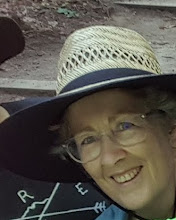Measures that Matter
This morning we attempted to drive to the Field Museum and find the parking deck for the Navy Pier. The traffic was impossible, the road construction baffled the GPS and the conclusion was to go back to the hotel and let Jessie take the bus after lunch to the Aquarium near the Field Museum. After my class we set out again for the Navy Pier where we had tickets to take a sightseeing boat up the Chicago River and take in the architecture. The time frame required taking the car again, but after some librarianly research, we had a way around the construction and made it handily to the dock. I really don't travel well and navigating the food situation is almost as stressful as the crazy traffic, but the river trip was wonderful and well worth it. The buildings are spectacular, the river is the place to see them, the evening was lovely and cool.
My class today was excellent and has left me convinced we need to totally rethink the data we collect and also the services we provide. She said so much it will be hard to summarize--little things like always saying "and" instead of "but" because "but" is a negative turn-off and "and" connects ideas in a positive way. And big things like aligning services AND metrics carefully--and after investigation and conversation with decision makers about their views on the organization's larger goals--to reflect and enhance the organizational goals. Every service we offer needs to answer the question "What difference does it make?" and each service needs to have metrics designed into it from the beginning that track goals and demonstrate that difference.

The process of designing meaningful metrics begins with understanding their context in relationship to the organization's goals, passing through the development cycle on the left and ending with communicating results to stakeholders only in terms of how the library has met the larger goals.
She stressed the importance of NOT focusing on stats except to use them internally to improve service, but to report the impacts of library services--qualitative rather than quantitative values.
She also noted that librarians take on new roles without giving up anything and can end up off track and not doing the important things well. Which is why she stressed evaluating services against the organizational goals and being willing to lay down those that don't directly relate. She said by demonstrating the choice to build services that are truly in mission alignment, the remaining services are more highly valued by management.
She talked about Balanced Scorecard evaluation and the Logic Model, but the bottom line was that everything we do has to positively answer the question, "What difference does it make?" and any metric we collect has to demonstrate that it does make a difference. As we are committing to taking on new and more projects--Endnote, photo archives, wikis, Spanish web portal, I think we really need to focus on these question before we commit to these projects. AND we need to follow her advice about designing metrics at the outset that demonstrate value and set specific targets and goals to assure we are on track.
I really am concerned we are overreaching in our commitments and would encourage us to pause and take the time to do this evaluation. We have not in the past, as in other organizations, been challenged to justify our work, but we are undergoing changes in management and funding and I think it would be smart of us to be ahead of this curve. I volunteer the barn for a planning retreat.
On this note, Jessie is headed downstairs for a Corona for us to split and hit the hay. Short session tomorrow then two beastly long days on Mon & Tues. Will try to keep it succinct.
 Indianapolis Museum of Art
Indianapolis Museum of Art Intergenerational Communication and MEBates again on Marketing for Introverts
Intergenerational Communication and MEBates again on Marketing for Introverts The Cochrane Collaboration
The Cochrane Collaboration
.JPG)










 Image courtesy of
Image courtesy of 


